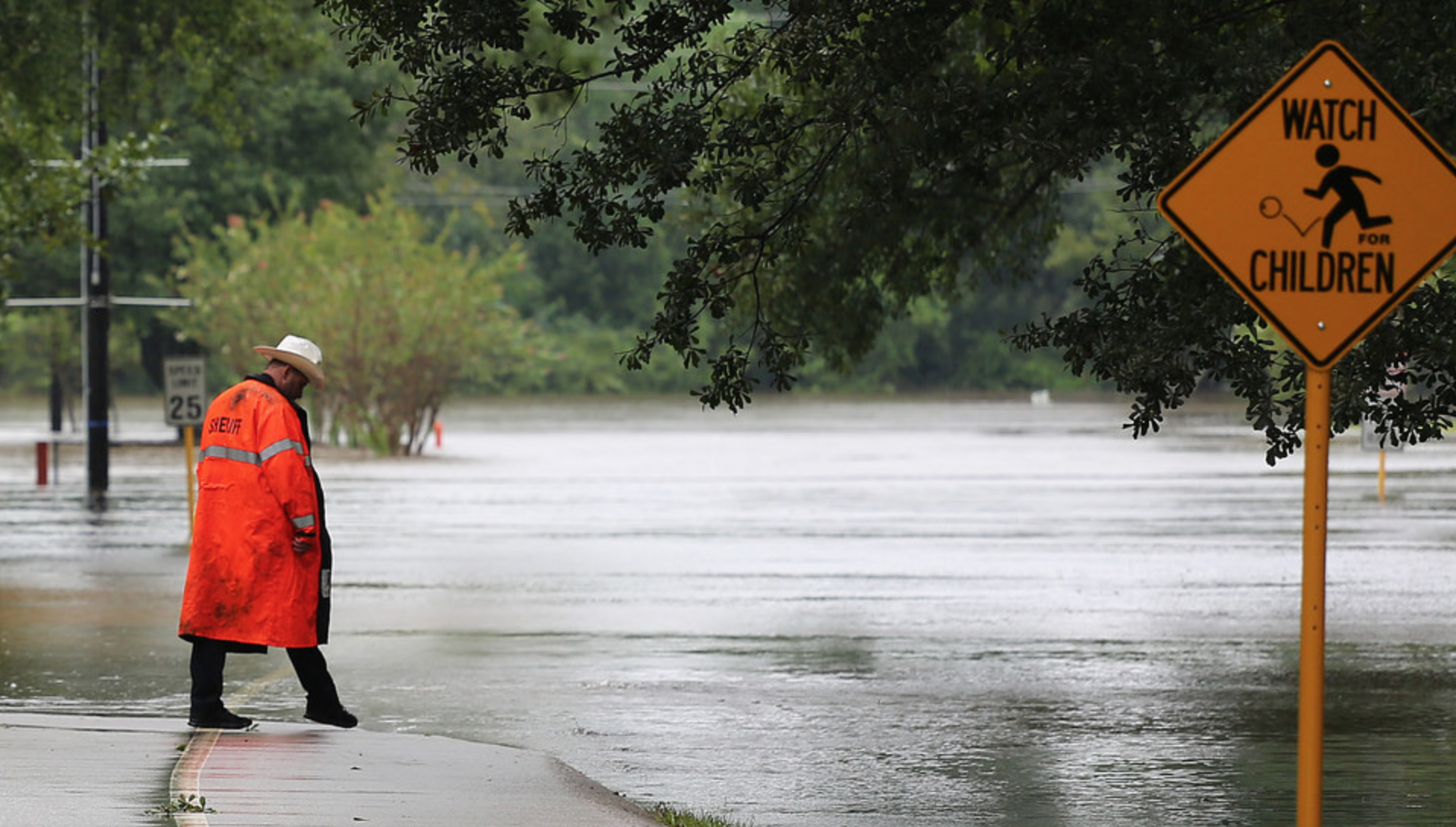As the City of Houston considers stricter regulations for new development in the wake of Hurricane Harvey, experts gathered Wednesday for the first of a two-day conference on flood mitigation and prevention organized by the Severe Storm Prediction, Education, and Evacuation from Disasters Center at Rice University to push for regional planning, increased funding and political action.
“Right after Harvey I could’ve sworn I heard everybody say this is the most important issue we have to deal with going forward,” said Harris County Judge Ed Emmett. “Where the hell are they? They’ve got to show up.”
Stressing the need to act quickly, Emmett was joined Wednesday morning by Houston’s Chief Resilience Officer Steve Costello. Looking six months ahead to the one-year anniversary of the storm, Costello said, “Our residents, both county and city, are going to say, ‘Well what have you done in the last year?’”
Emmett reiterated many of the points outlined in his 15-point plan, including the need for a regional floodwater management organization, adding a third reservoir on the west side of Houston and allowing Harris County to collect some of the sales tax generated in unincorporated parts of the county to put toward flood mitigation and infrastructure. Emmett also stressed the role of the Katy Prairie Conservancy and the protection of green space to the west of the city. “We need to completely protect the Katy prairie,” said Emmett, “just set it aside and say we’re not going to touch it.”
But his regional approach vision also included more participation from smaller jurisdictions, including the more than 1,000 tax-collecting municipal utility districts outside the city boundaries that he said should also be responsible for flood prevention and planning.
That regional approach must also involve more comprehensive planning and not just site-specific requirements, said Costello.
“Simply putting detention everywhere in the city, in the county, sometimes is not the technically feasible way to do it. There are areas in the watershed where you should allow the water to run off quickly,” noted Costello, an engineer whose firm developed a community behind the Barker reservoir, which was flooded when the Army Corps of Engineers decided to release the water from the Addicks and Barker reservoir.
“Yes, my engineering firm did design...the subdivision behind Barker reservoir,” said Costello, “We were using the 100-year ponding level…is that the right thing? Post-Harvey, no. Is that what it was in the past? Well, yes that’s the way we did it.”
As federal money slowly makes its way to the region, Emmett stressed the importance of evaluating impact. “So many of the programs for flood mitigation and even buyouts like to do a cost-benefit analysis and that cost-benefit analysis is how much money do you save based on the property value. Well, I think that needs to go away,” said Emmett. “I think we ought to be talking about people.”
Emphasizing the pace of the recovery funding process, Costello said the City of Houston has only investigated roughly a third of affected public buildings, a necessary step for funding from the Federal Emergency Management Agency which also conducts its own site investigations. And of those, the two entities have yet to come to a price agreement on a single structure, according to Costello.
But Costello said the city is looking to spend some of the $1 billion in hazard mitigation funding promised to the hard-hit coastal area, half of which was made available this month. Touting several potential projects, Costello pointed to two canal diversions included in the rerouting of I-45 in downtown Houston that would effectively lower the water level of White Oak Bayou there five feet, according to Costello. Additional work upstream near the Heights by I-10 would reduce the water levels there too.
More money is still needed, according to the officials. In particular, Costello called out the state’s Rainy Day fund. “Can you open up the cash register, lend it to us temporarily and we’ll pay you back as the federal dollars come in,” he said of the fund, which would require a special session to access before the legislature meets again in 2019.
“In my opinion, our number one priority ought to be buying ” said Jim Blackburn, a professor in the practice of environmental law in the civil and environmental engineering department at Rice University. “Right now we should get as much money as we can and start buying right away and buying out houses that flooded...Some houses just aren’t “protectable,” said Blackburn, and the “water needs more room.”
Looking forward, Blackburn cautioned against relying on the floodplain maps that he said are slow to reflect change and don’t take adequate account of climate change. “We’re going to be playing catch up,” said Blackburn. And he called out existing development, including construction of the Grand Parkway on the west side to spur further development there. “I think we have misplaced priorities in the community,” said Blackburn, who also highlighted the need for equitable flood prevention planning in higher poverty watersheds and zip codes. “Every time they ask who’s responsible, the answer they get is this,” he said, raising his finger to suggest the various jurisdictions have blamed other entities.
“We’re not going to prevent rain from falling again.” said Emmett. “But what can we do to mitigate it? What can we do to make people safer?”

